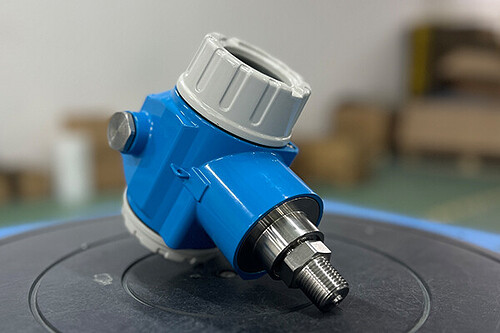Classification by use environment
General industrial pressure transmitter
Features: It can withstand a certain degree of temperature changes, humidity, dust and mechanical vibration, with a protection level between IP65-IP67, and an operating temperature range of -20℃-80℃.
Application scenarios: It is suitable for pressure measurement in most industrial plants, such as compressed air system pressure monitoring in factories and ordinary pipeline fluid pressure measurement.
Explosion-proof pressure transmitter
Features: It has explosion-proof function, and through special explosion-proof structure design and sealing measures, it prevents internal electrical sparks or high temperatures from causing external explosions. There are multiple explosion-proof levels.
Application scenarios: It is commonly used for pressure monitoring in hazardous places such as petrochemicals, natural gas mining, and coal mines.
Waterproof pressure transmitter
Features: It has good waterproof performance, and the protection level is generally IP68 and above. Application scenarios: It is commonly used for pressure measurement of underwater equipment, such as diving equipment, underwater robots, sewage treatment systems, etc.
High temperature pressure transmitter
Features: Suitable for high temperature environment, the working temperature range can reach 200℃-600℃ or even higher, using special high temperature resistant materials and heat insulation measures.
Application scenario: Commonly used for pressure detection in high temperature industrial processes such as metallurgy, glass manufacturing, and ceramic production.
Classification by output signal
Analog pressure transmitter
Features: Output analog signal, usually 4-20mA current signal or 0-10V, 0-5V and other voltage signals, can be directly connected to traditional analog instruments or control systems.
Application scenarios: Widely used in some industrial systems that do not require extremely high accuracy and use traditional control methods, such as pressure monitoring in simple temperature control systems.
Digital pressure transmitter
Features: Output digital signals, such as HART protocol, Profibus-DP, FF and other digital communication protocols, can provide remote configuration, diagnosis, multivariable measurement and other functions.
Application scenarios: Widely used in modern automated control systems and smart factories, facilitating intelligent management and efficient control of equipment.
Classification by installation method
Flange pressure transmitter
Features: Connected to the pipeline or container through a flange, easy to install and disassemble, and good sealing performance. Application scenarios: Commonly used in chemical, food, pharmaceutical and other industries where sealing requirements are high, such as pressure measurement of strong acid and strong alkali media in chemical pipelines.
Threaded pressure transmitter
Features: It uses a threaded interface to connect to the device under test, which is simple and compact to install. Application scenarios: It is generally used in situations where the pressure is low and the medium is clean, such as pressure measurement in small hydraulic systems and pneumatic systems.
Insertion pressure transmitter
Features: The pressure sensitive element is inserted into the measured medium for measurement, and it can quickly respond to changes in the medium pressure. Application scenarios: It is commonly used for liquid level measurement in large-diameter pipelines, rivers, reservoirs, etc., and the liquid level height is indirectly calculated by measuring the liquid pressure.

